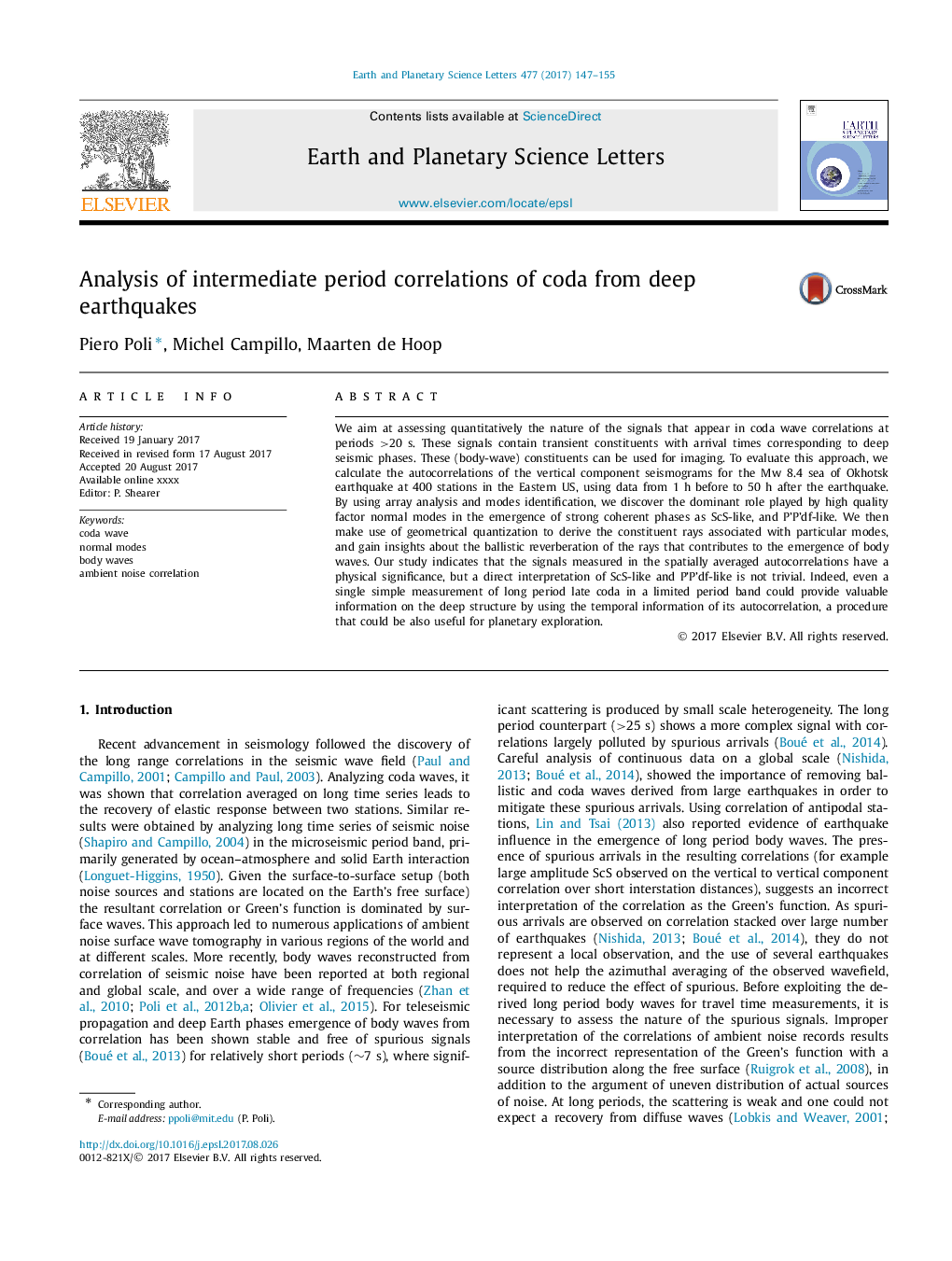| Article ID | Journal | Published Year | Pages | File Type |
|---|---|---|---|---|
| 5779540 | Earth and Planetary Science Letters | 2017 | 9 Pages |
Abstract
We aim at assessing quantitatively the nature of the signals that appear in coda wave correlations at periods >20 s. These signals contain transient constituents with arrival times corresponding to deep seismic phases. These (body-wave) constituents can be used for imaging. To evaluate this approach, we calculate the autocorrelations of the vertical component seismograms for the Mw 8.4 sea of Okhotsk earthquake at 400 stations in the Eastern US, using data from 1 h before to 50 h after the earthquake. By using array analysis and modes identification, we discover the dominant role played by high quality factor normal modes in the emergence of strong coherent phases as ScS-like, and P'P'df-like. We then make use of geometrical quantization to derive the constituent rays associated with particular modes, and gain insights about the ballistic reverberation of the rays that contributes to the emergence of body waves. Our study indicates that the signals measured in the spatially averaged autocorrelations have a physical significance, but a direct interpretation of ScS-like and P'P'df-like is not trivial. Indeed, even a single simple measurement of long period late coda in a limited period band could provide valuable information on the deep structure by using the temporal information of its autocorrelation, a procedure that could be also useful for planetary exploration.
Keywords
Related Topics
Physical Sciences and Engineering
Earth and Planetary Sciences
Earth and Planetary Sciences (General)
Authors
Piero Poli, Michel Campillo, Maarten de Hoop,
